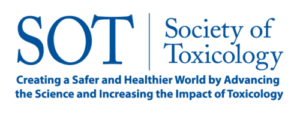
ToxStrategies congratulates our President and co-founder Dr. Laurie Haws on being elected Vice President-Elect of the Society of Toxicology (SOT)! Dr. Haws and the full slate of newly elected officers and committee members will begin their terms on May 1st. SOT, founded in 1961, is a professional and scholarly organization of scientists from academic institutions, government, and industry, representing the great variety of scientists who practice toxicology in the US and abroad. Dr. Haws is passionate about the Society’s mission to create a safer and healthier world by advancing the science and increasing the impact of toxicology. She is a graduate of the Curriculum in Toxicology at the University of North Carolina at Chapel Hill, a Diplomate of the American Board of Toxicology (DABT), and a Fellow of the Academy of Toxicological Sciences (ATS). Dr. Haws has more than 30 years of experience in the areas of toxicology, human health risk assessment, risk communication, and scientific and regulatory policy.



